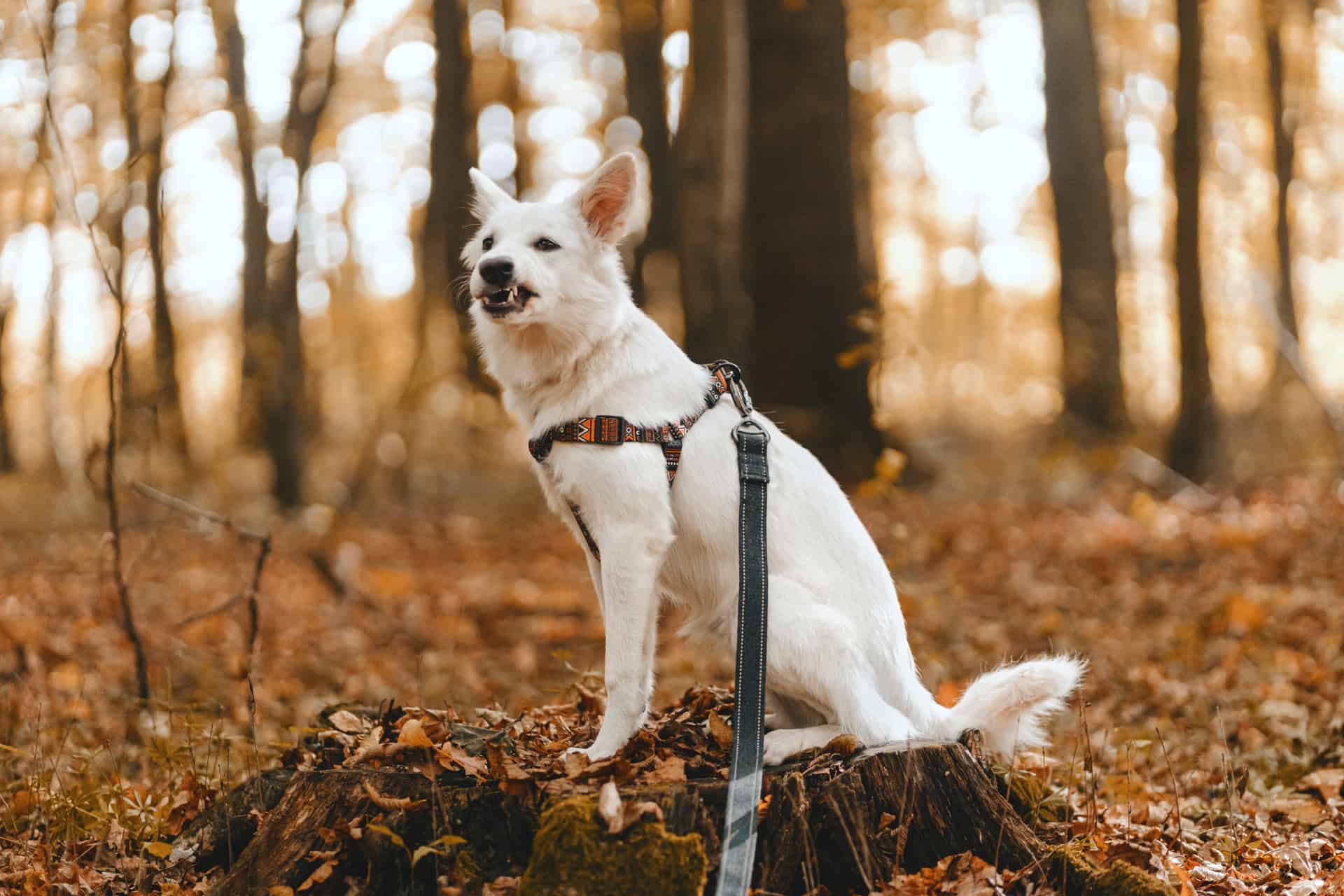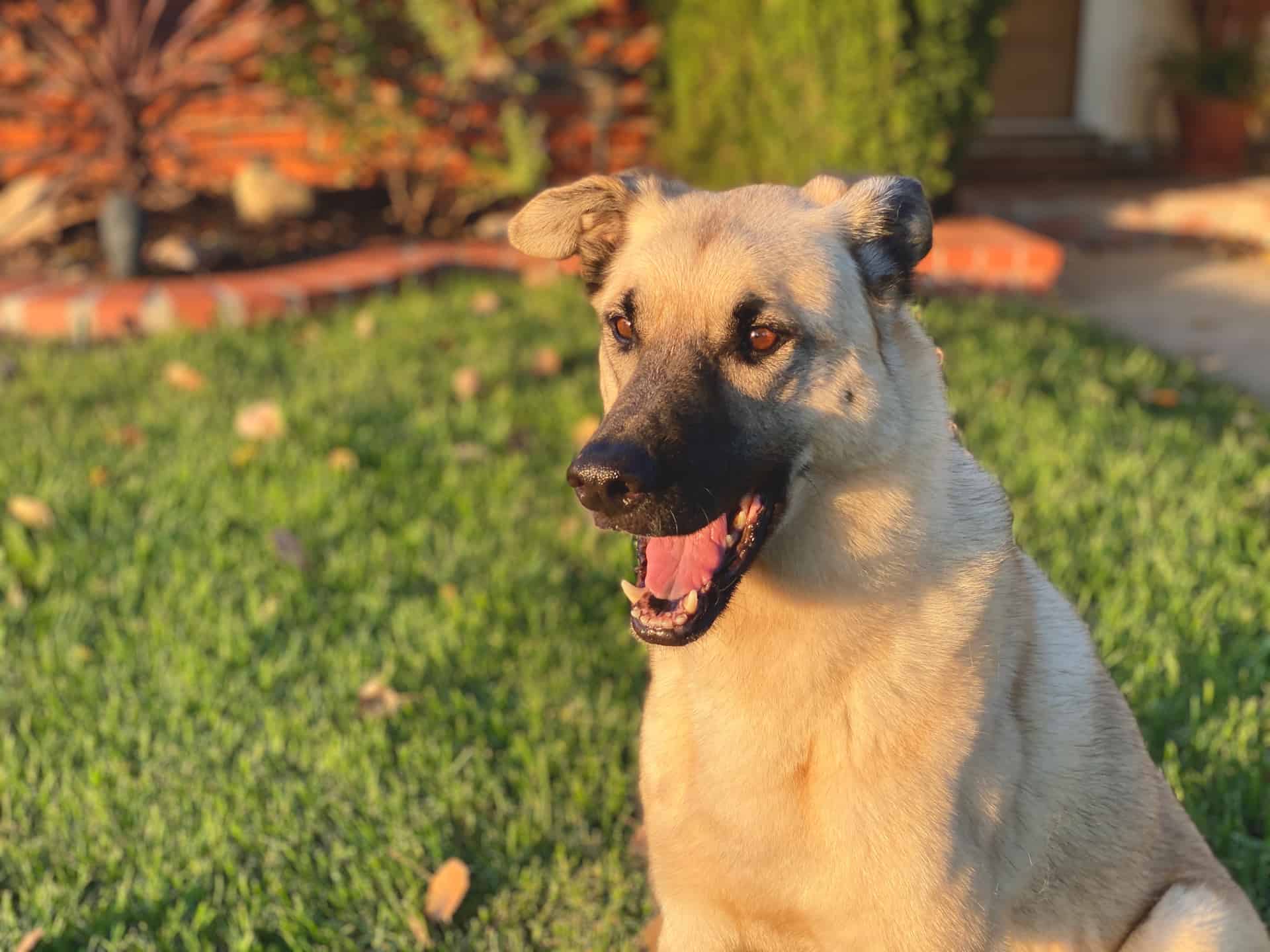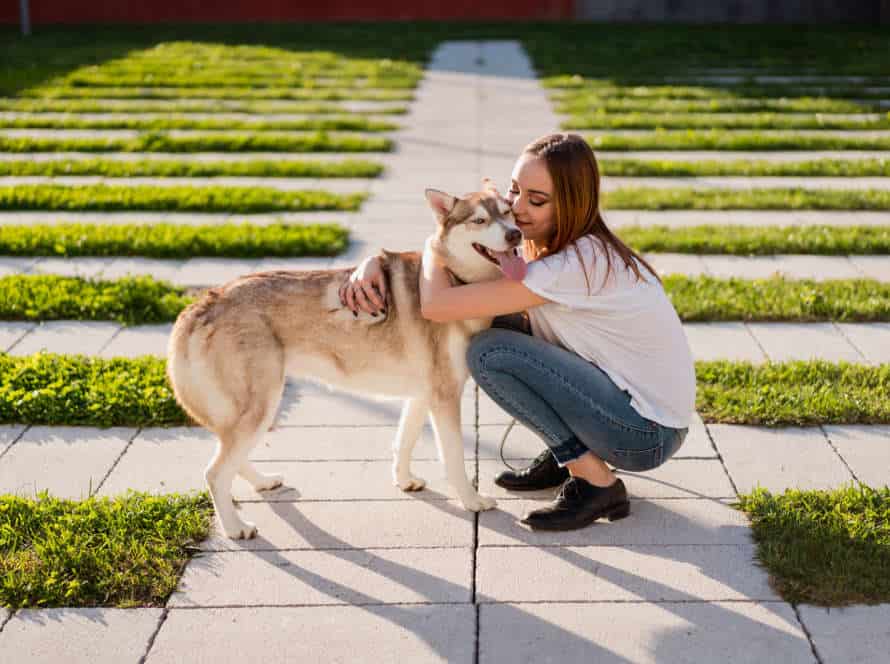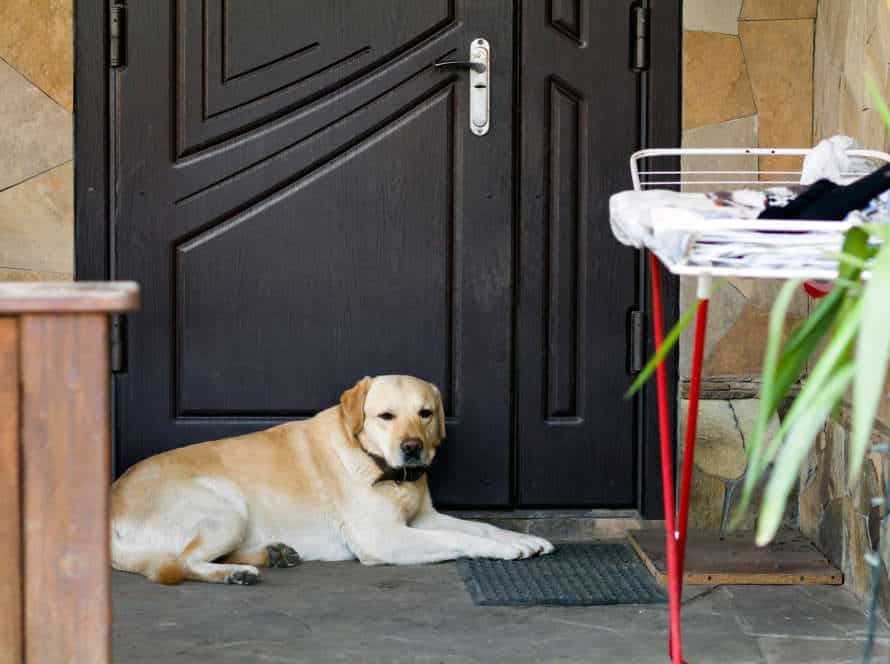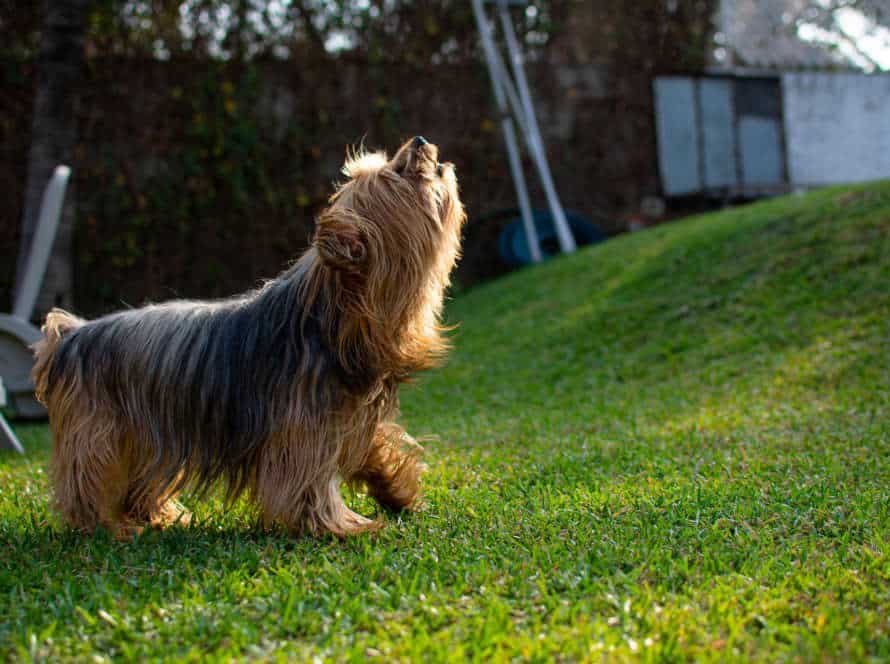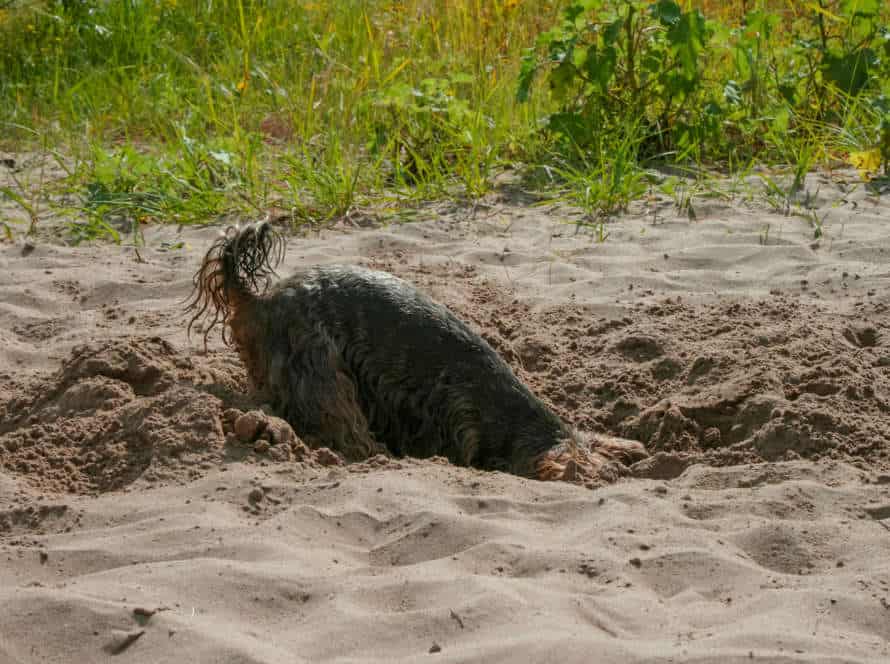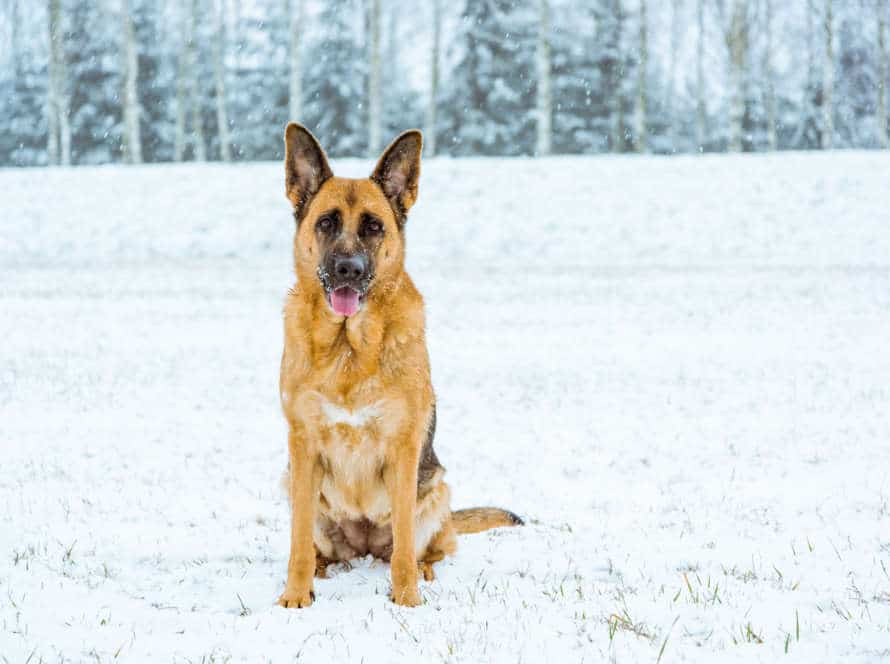The Impact of Aging on Aggression in Adult Dogs
As dogs age, their aggression can differ. Reasons for this include pain, anxiety, and cognitive decline. Studies have shown that older dogs tend to be more aggressive to strangers, dogs, and situations.
This is especially true when they are in an uncomfortable situation. Aggression in adult dogs also depends on breed, gender, and socialization. Dog owners should watch out for any changes in their pet’s behaviour and seek help if needed.
Proper care, training, and medical check-ups can help reduce the effects of aging on aggression. This will lead to a better life for both pet and owner.
The Aging Process in Dogs
Most dogs’ lifespans are 10-13 years. As they age, their behaviors can shift. Age can affect canine aggression. This piece shares how to identify and manage aggressive actions in aging dogs.
Physical Changes that Occur in Aging Dogs
When dogs get older, they go through many physical changes. It usually begins when they are 7-9 years old, and it’s different for different breeds and sizes. These changes can affect behavior, like aggression.
Examples:
- Stiffness and pain that decreases mobility and activity.
- Weight gain and less muscle.
- Loss of sight, hearing, and mental clarity.
- Higher chance of getting chronic health issues like cancer and diabetes.
These physical changes may lead to different behavior, such as increased aggression. Make sure to give your aging pup the best care, including vet check-ups, a good diet, and exercise.
Pro Tip: Teach your pup from an early age to help avoid aggressive behavior in later years.
Behavioral Changes that Occur in Aging Dogs
As dogs age, their behavior alters. Common changes are a decrease in aggression, caused by hormones and low energy.
Other changes include increased anxiety, irritability, and cognitive decline. Additionally, their senses, like hearing or sight, may diminish, making them more sensitive to their environment.
Pet owners should recognize these changes and give proper care and attention to their aging dog. Vet check-ups, a balanced diet, and exercise can help slow down the aging process, keeping their health and joy intact.
How Aging Can Affect Aggression in Dogs
As dogs age, their behavior can change, including aggression. As they grow older, existing issues can be made worse. Physical and mental changes can be the cause.
Sensory ability can decrease with age, leading to fear and anxiety. Health conditions and mobility issues can cause pain, discomfort and frustration, leading to aggression.
Socialization and training can help with the effects of aging on aggression. Strategies like modifying the environment, adjusting routines and providing mental and physical enrichment can be used.
Vet check-ups and early intervention can also help address underlying health issues that can cause or make aggression worse in older dogs.
Types of Aggression in Adult Dogs
Aggression in adult dogs can have various causes, such as fear, insecurity, and socialization. Age also has an effect on the aggression of an adult dog. This is because aging can alter its physical ability, mental state, and social surroundings. In this article, we’ll be looking at different types of aggression in adult dogs and how aging impacts these behaviors.
Territorial Aggression
Territorial aggression is a common type of aggression in adult dogs. It happens when they think their property is in danger. This can lead to barking, biting, and attacking.
Other types of aggression include fear aggression, dominance aggression, protective aggression, and redirected aggression.
As dogs get older, their aggression can change due to hormones, physical limitations, or mental decline. An example is Cognitive Dysfunction Syndrome, which causes confusion, anxiety, and irritability, leading to aggressive behavior.
To prevent or manage territorial aggression, dog owners and caregivers should train and socialize their dogs early. Plus, provide physical and mental stimulation and seek professional help if needed.
Pro tip: Don’t punish your dog for territorial aggression. Instead, use positive reinforcement and reward-based training to encourage good behavior.
Protective Aggression
Protective aggression is an aggressive behavior seen in adult dogs when they feel a threat to their owners or territory. This can be a dangerous thing, so it must be managed correctly.
Other types of aggression in adult dogs are fear aggression, dominance aggression, territorial aggression, and prey aggression. Each one needs its own unique way of dealing with it.
As they get older, dogs may show less aggression. It’s essential to keep an eye out for any changes in their behavior and consult a vet or dog behaviorist if anything seems unusual. Taking care of aggression in adult dogs is vital for their health and for keeping people safe.
Fear-Motivated Aggression
Fear-motivated aggression is a common type of aggression in adult dogs. It can be triggered by new people, other animals, or loud noises.
Signs of anxiety and fear may be seen in dogs, such as cowering, trembling, barking, or growling.
To manage fear-motivated aggression in adult dogs:
- Identify triggers that cause aggression and avoid these situations.
- Create a safe and comfortable environment for the dog.
- Use positive reinforcement training to help the dog create positive experiences with the triggers.
As dogs age, they may be more prone to fear-motivated aggression. Monitor and manage their behavior proactively.
Signs of Aggression in Adult Dogs
Aging can affect aggression in adult dogs. As a pet owner, you must be aware of any signs of aggression. It could be fear, a medical issue, or something else that needs attention. In this article, we’ll carefully observe the symptoms of aggression in older dogs and their possible causes.
Body Language of Aggressive Dogs
Be aware of aggressive dogs’ body language. It’s important to prevent potential attacks. Here are a few signs:
- Growling: Annoyance or feeling threatened.
- Stiff body: Tense and rigid.
- Snarling and baring teeth: Ready to bite.
- Raised hackles: Hair on back stands up, fear or arousal.
- Lunging and snapping: Sudden and aggressive movements.
If your adult dog shows any of these signs, address it immediately. Aging and medical issues may cause aggression. Get help from a professional. Pro Tip: Remain calm and avoid eye contact or aggressive movements.
Verbal and Physical Signs of Aggression
Recognizing aggression in adult dogs is important for safety. Verbal signs: Growling, snarling, barking. Take precautions. Physical signs: Stiff body, raised hackles, bared teeth, staring, biting. Treat seriously.
Aging increases aggression chance due to hearing, sight, and cognitive loss. Take steps to ensure safety. Seek professional help to understand and control aggression. Do it early.
Risks Associated with Aggression in Aging Dogs
Aging dogs can become more aggressive. Changes in physical and mental health can lead to this. It is vital to understand the risks of aggression in older dogs. In this article, we will look into the risks associated with it.
Increased Risk of Injury to Humans or Other Animals
Aging dogs can become aggressive, which is dangerous. Here are the risks:
- Injury: A dog bite can be serious.
- Financial: Medical bills, legal fees, and insurance claims.
- Emotional: Victims and owners can suffer trauma and fear.
To address aggression in aging dogs, regular exercise and training should be done, and a vet consulted to detect any health issues causing it. Pro tip: Professional help is essential for managing aggression in aged dogs.
Potential Legal Consequences
As dogs age, they may become more aggressive. This can lead to legal issues for their owners. If a dog bites or attacks someone or something, the owner could be held responsible. This could mean big legal and financial repercussions.
It’s important to take steps to prevent this. Training your dog, keeping them away from tension-filled situations and giving them the right care are all important. If your pup is acting aggressively, it’s crucial to take action fast. A vet or animal behaviorist can help you manage the aggression in your aging dog.
Owners must be responsible for their pet’s behavior and take precautions to keep them from causing harm.
Pro tip: As a dog owner, make sure your dog’s behavior is in check. Especially when they get older. This will save you from any legal or safety risks.
Reduced Quality of Life for Dogs
Aggression in aging dogs is a major issue. It affects their quality of life. Pet owners must understand the risks and prevent aggressive behavior.
Factors that can trigger aggression include neurological changes, health issues and environmental stressors.
The impact of aggression on an aging dog is serious. It harms their quality of life and can be a risk to people and animals nearby.
It’s important for pet owners to recognize early signs of aggression. They should take steps to address it, such as behavioral training, medical treatment, and changes in the dog’s environment. Doing this will ensure that aging dogs live peacefully and happily.
Treating and Preventing Aggression in Aging Dogs
Aging can have a huge effect on a pup’s behavior. It can cause aggression in many cases. Pet owners must be aware of this, and take steps to manage it. It is also possible to prevent aggression in older dogs.
We will examine the impacts of aging on aggression in adult dogs and some strategies for treating and preventing it.
Veterinary Treatment and Medications
Aging dogs may show signs of aggression. To treat and prevent it, vets often use a combination of treatments and meds.
- Behavioral modification training can teach ’em good behaviors, while managing bad ones. It uses desensitization and counter-conditioning.
- Socializing with other dogs and people can help too.
- Your vet’ll do a check-up to see if there’s any health issues causing the aggression.
- Meds like anti-anxiety drugs or antidepressants can reduce aggression too.
It’s important to work with your vet for the best solution for your pup. Plus, regular exercise and playtime can help aggression in dogs of all ages.
Behavioral Modification Techniques
Behavioral modification can be useful for treating and preventing aggression in aging dogs. The aging process can cause an increase in aggression. So, here are some effective techniques:
- Positive reinforcement: Give treats and praise when your dog behaves well. This can help reduce aggressive behavior.
- Counterconditioning: Change your dog’s emotional response to a trigger that causes aggression. For example, if your dog gets aggressive around other dogs, slowly expose them to other dogs while giving them treats and praise.
- Desensitization: Expose your dog to the source of their aggression over time, but at a distance that doesn’t cause them to become aggressive. Gradually decrease the distance between your dog and the trigger.
Remember, aggression in aging dogs can be caused by a medical condition. So, consult a vet to rule out any health issues.
Management Strategies to Prevent Aggressive Incidents
Aging in dogs can lead to aggression. But, pet owners can take steps to stop it. For example, canine enrichment. Keep your pup entertained with interactive toys, puzzles, and games. Socialize them too, by exposing them to different people, animals and surroundings. Training is also important. It improves communication and reduces aggression. Healthcare is key – a good diet, exercise, and regular vet check-ups help maintain their physical and mental health. Lastly, watch their behavior and get help if you see any signs of aggression.
Frequently Asked Questions
What is aggression in adult dogs?
Aggression in adult dogs refers to any behavior that involves harm or the threat of harm towards other animals, people, or objects. This behavior can range from growling, barking, or snarling to biting and attacking.
Does aging affect aggression in adult dogs?
Yes, aging can have an impact on aggression in adult dogs. As dogs age, they may experience physical and cognitive decline, which can contribute to changes in behavior, including aggression.
What are some common causes of aggression in adult dogs?
Aggression in adult dogs can be caused by a variety of factors, including fear, anxiety, territoriality, resource guarding, frustration, and learned behavior.
How can aggression in adult dogs be prevented?
Aggression in adult dogs can be prevented through proper socialization and training, providing a safe and comfortable environment, and addressing any underlying medical or behavioral issues. It is important to seek the help of a professional if your dog exhibits aggressive behavior.
Can aggression in adult dogs be treated?
Yes, aggression in adult dogs can be treated through various methods, including behavior modification, medication, and training techniques. The specific treatment plan will depend on the underlying cause and severity of the aggression. It is important to work with a professional to develop an effective treatment plan.
Why is it important to address aggression in adult dogs?
Addressing aggression in adult dogs is important for the safety of both the dog and the people and animals around them. Aggressive behavior can lead to injury and even death, and it can also result in legal consequences for the owner. Furthermore, addressing aggression can improve the overall quality of life for the dog by reducing stress and anxiety.

